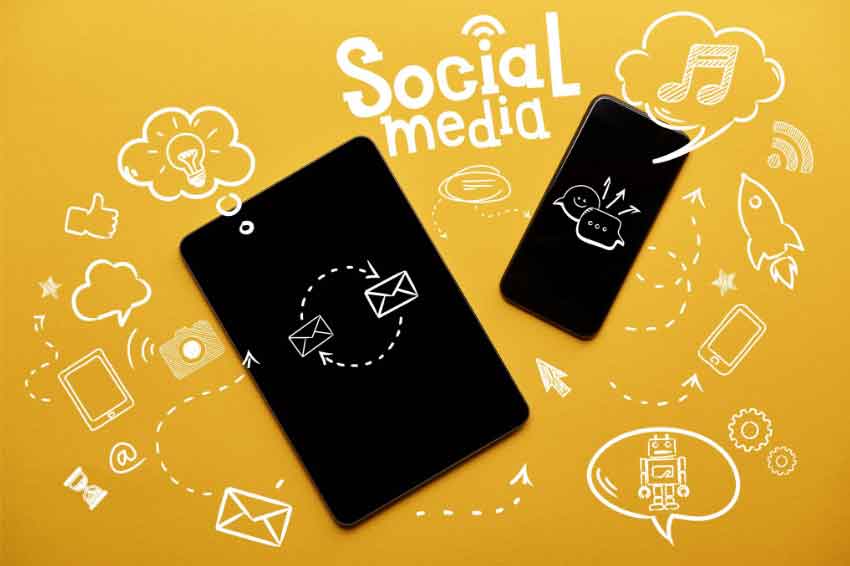Show:
7 Things You Need in Your Business’s Branding Kit
When I work with a new business, one of the questions I ask is what their brand kit includes. Right now, you might be thinking, “Branding kit? I don’t need a branding kit.”
Many people think that branding is just visual, and I’ll talk about that in a bit, but it’s also your name, where you came from, what you care about, and more.

Today, I’m sharing seven things you need in your business’s branding kit. It’s intended for those who’ve never had an official brand created — or even if you have but want to refresh your knowledge. But first, here’s what you need to know about just what a branding kit is.
What is a branding kit?
The branding kit is a collection of all the visual elements representing your brand. You can use it to express your brand identity, which is widely recognized as an integral part of a business’s corporate strategy.
A branding kit should include everything from logos and business cards to stickers and product packaging. It’s also a valuable tool for internal use, helping employees understand how to communicate the company’s values with customers.
What Should Your Branding Kit Include?
Here are seven things you need in your business’s branding kit:
1. Company Logo
The most important item in your branding kit is the company logo. It’s used on all kinds of marketing materials and is the first thing people see when they land on your website.
Your company logo is the face of your company — it needs to look professional and convey what kind of business you’re in.
If you’re a small business with a focus on bootstrapping, you can still create amazing logo designs using an online template editor with excellent results.
Think about how your logo will look on everything from letterhead to packaging and website graphics, and make sure it looks good in all those places.

2. Branding Guidelines
These tell employees how to use your logo and other elements of your brand in their work. They also include rules for how social media posts should be handled — for example, whether or not employees should tweet or post on Instagram during business hours.
They’ll tell people how big or small they should make their logos, whether they can modify them at all, and whether they need permission before doing so (if so).
3. Tagline
A tagline is a short phrase that describes what your business does or who it serves. It should be memorable and short enough to fit on a business card or website header. A tagline is a concise phrase that describes your business or product.
It’s often to make unique advertising campaigns and on your website, but you can also use it to describe your brand as a whole. It’s one of the first things people see about your brand — ensure it represents what you do well.
4. Website
Every business needs a website, but don’t stop there. Your website should be a reflection of your brand’s personality — and every element on it should reinforce that message. In fact, use a custom domain name for your website (www.yourdomainname.com) if possible.
Make sure your logo appears on every page, and use it consistently throughout the site. The same goes for the color palettes, fonts, and imagery.
Then, when someone visits your site, they should immediately get a sense of who you are and what you stand for without having to read a single word.
5. Letterhead and Envelopes
These items aren’t just for professionals anymore — everyone from freelancers to small businesses needs them! If you’re sending out mailers or invitations for an event, it’s vital that these materials match the look and feel of your brand.
Your stationeries should also reflect professionalism at every turn (no one wants to get an envelope with stickers on it).
Letterheads serve as a great place to put contact information, so people know how to reach out if they have questions or want more information from you.
6. Business Cards
Business cards are another essential tool you can have when it comes to marketing your brand. They’re the first thing that people see, and they need to be able to make an impression.
Your business card should include your name, company name, phone number, email address, and website URL. You can also include your social media handles if you want to expand your reach and get more followers.
7. Social Media Branding Previews
Social media accounts aren’t only an excellent way for people to interact with your company on their terms, but they’re also one of the more budget-friendly branding options a business should have in its arsenal. They can share content directly with their friends and family and stay up-to-date on your company’s new releases.

Create social media branding previews that include photos from events or even screenshots from videos so users can get a taste of what it would be like if they follow or friend you on social media sites.
A Good Branding Kit Will Help You Stay on Message
So what’s the moral of the story? Never underestimate the power of a branding kit. These branding kits can help you stand out by showing your thought leadership in a way others might not have considered or taken advantage of.
It’s not going to score you immediate points with every contact, but it never hurts to take every opportunity to give yourself an edge over your competition.

 Return to Previous Page
Return to Previous Page








